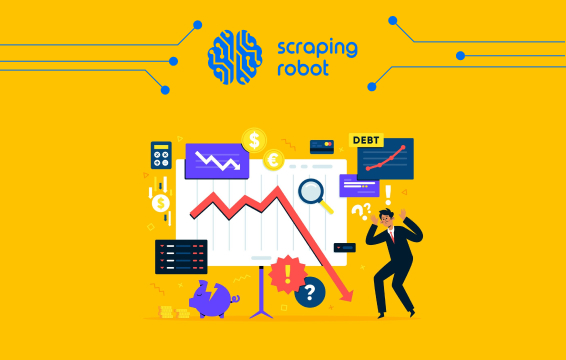Churn Analysis: Preventing Customer Loss With Data

“A bird in hand is worth a couple in the bush.” Cliched, right? Yes, but still true, especially when it comes to business. No matter how big (or small) your business is, keeping the customers you already have is more operationally and financially efficient than trying to gain new ones. But are you really in control of which customers stay and which ones leave? You could be, with customer churn analysis.
Churn in business is a metric that defines the number of customers that have stopped using your services over a period of time. Customer churn analysis allows you to use the past data of customers that left (and the ones that stayed) to identify those weak points in your business processes that can lead to customer dissatisfaction and, therefore, customer loss. A typical customer churn analysis example is investigating why a lead cancelled their subscription.
Successfully carrying out churn analysis is dependent on having reliable and consistent streams of data that reflect any change in the habits of your customers and how they interact with your brand and services. Therefore, in this post, we’ll discuss how you can create a data funnel that provides you with real-time customer data to carry out intelligent churn analysis and keep more customers. Feel free to check out answers to specific questions you might have with the table of contents below.
Table of Contents
1. Wait, What Is Churn Analysis?
2. Churn Analysis Example: And the Required Datasets
4. Using Scraping Robot’s API as Your Churn Data Analysis API
Wait, What Is Churn Analysis?

Before we look at how to couple a data vehicle to your software for churn data analysis, let’s delve deeper into the workings of customer churn analysis. Think of customer churn like bounce rate, but for the entire business instead. You want to answer questions like, “how long are customers staying with us,” “what is the major reason for customers leaving?” “What is the average amount customers spend before they leave?” “Why are the customers that have not left still with us?” These are questions that you get to answer with churn data analysis. The concept of churn analysis involves thoroughly examining your customer database to identify those customers at risk of churning and taking steps to prevent the churn. Now, let’s define some terms involved with churn analysis.
Churn Rate: Churn rate refers to how frequently you are losing customers. It can also refer to the rate at which customers unsubscribe from a particular service you offer. To calculate your churn rate, subtract the number of users or customers at the end of a period from the number at the beginning of that period, then divide it by the number at the beginning of the period. That will give you your churn rate.
Churn Probability: This refers to a particular customer’s tendency to churn at the end of a specific period. It could also refer to the expected number of churning customers at the end of a period.
Churn rate data: reveals the frequency of customers who stopped patronizing your organization, the stage at which they discontinued their patronage and the primary identifiable reason for the churn. Basically, it is an overview of the whole process of churn in your business. It is also the primary component of your churn analysis systems.
Why do you need to reduce churn?
Like we said earlier, a bird in hand is worth two in the bush, whether you are a hunter or a business owner. The costs involved with churn go beyond just the loss of future expected revenue from the customer. It costs about 7x more to acquire a new customer than to retain an old one. Also, when you lose a customer, there is the probability that the customer has not spent enough money with your business to cover the cost of his acquisition. Meaning you lost money to acquire that customer. Also, the loss of a single customer might lead to an outpouring of similar complaints from your customers, which leads to the loss of more customers. A customer might have an issue with your service but not know the exact way to address it. When they see someone else with the same problem, they tend to cluster and follow the same steps as that person, which could mean leaving your service when that person does. All these and more are why you need to reduce your churn rate and keep more of your customers.
Churn Analysis Example: And the Required Datasets

In many industries, customer churn plays a significant role. Any smart business owner knows losing even one customer is not ideal, and it shouldn’t be trivialized. You need to put into place a system to detect dissatisfied customers swiftly, identify the exact pain points causing dissatisfaction and take steps to solve it, giving them reasons to want your services again. More examples of customer churn are:
- Refusal to renew an agreement
- Choosing another brand over yours
- Closure of accounts
- Unsubscribing from your email list
- Deleting/uninstalling your app
Knowing your customer is the key to understanding what they need and translating it into your services. In most cases, you don’t need to talk to specific customers before you know how to satisfy them. For example, a sudden drop in the level of interaction with your social media posts could signify a reduction in interest from your customers. Perhaps, your products no longer excite them, or they no longer feel included in your brand. Or maybe they’ve outgrown your product and need a better option.
Generally, obtaining information that helps you predict your customers’ buying behaviour is good practice as a business owner. You can never know too much about the people you sell to. When it involves reducing churn, it becomes even more imperative to obtain some specific datasets that can help you highlight a customer that has a tendency to churn. While you cannot stop all customers from leaving, you can significantly reduce your churn rate and increase profitability. Some valuable datasets needed for churn data analysis include:
- Gender
- Coupon Usage
- Product choices
- Customer Interactions
- Frequency of Purchase
- Zip Code
- Product Preferences or Combos
- Complaint Priority
- Store Visits / Online
- Income Bracket
- Frequency of complaints
- Time of Day/Season of Purchase
- Customer Information
- Occupation
- Purchase History
- Date of Last Purchase
- Value of Purchases
- Balances / Store Credit
- Service Questions
Predictive Churn Analysis

It is not enough to identify customers at the edge of leaving and then stop them. Sooner or later, you’ll miss one or two or ten. You need to predict the probability of customer churning long before they even think of it. And also determine the best marketing practice to implement to prevent the churn. And that is what brings us to predictive churn analysis. Using a predictive Churn Model, you can implement targeted proactive retention practices to keep your customers in line and satisfied before they even think of leaving. What you need here is to extract the historical data of customers and narrow it down to those who are likely to discontinue your business. You can tell by the decline in their interests or transactions, so you can initiate damage control to prevent them from leaving.
Using Scraping Robot’s API as Your Churn Data Analysis API

Now, let’s talk about how to couple a data vehicle to your analysis software. One recurring theme of our discourse is data. You need customer data, loads of it, to successfully anticipate your customers’ churn risks and take steps to prevent it. Now, this data is readily available on and off the internet. But the question is, can you keep up with changes in this data? For example, say you sell dental care implements, including braces. Now, one of your customers is turning 21 tomorrow and has decided to take out her braces. Of course, she still needs to take care of her teeth, but not with braces. Even though tomorrow is just another day, like any other day, if you do not have information about the day’s significance to your customer, you are likely to lose her. Once she takes out the braces, she’s at a turning point where she might decide to look for a fancy brand for her dental care products. Or you could simply upsell her with more dental products from your own brand. This is why it is vital that you set up a data vehicle that can continuously crawl the web for critical updates about your customer and send it directly to your churn analysis software. And you can do that with Scraping Robot’s API and scraping software.
Web scraping uses automated bots to crawl through the source code of webpages and extract data according to preset instructions. Basically, this means you can set a bot to go on to a social media group and pull the publicly available profiles of the group members. If this group happens to contain your customers, you have easily obtained information that could otherwise take you days and an unknown number of surveys to obtain. An API, on the other hand, is an interface that allows pieces of software to communicate. These two, together, represent a data vehicle that can help you crawl the internet for data, extract it, organize it and then feed it directly into your analytics processes. All with minimal input from you. And that is what we offer you at Scraping Robot.
Our scraping software enables you to collect data from any website on the internet. But that’s not the best part. With our scraping API, you can set up a funnel that directly sends all the data you need to the point of need in real-time. Our API can also take requests from your software to our scraping software to help you keep up with changes in your customers’ behaviour. With these two software pieces, you never have to worry whether you are missing vital signs that could indicate a customer about to churn. Our API integrates seamlessly with any software and includes accurate documentation for easy use. To get started, just go to our API page and sign up.
Conclusion

Like my Dad would say, “It is more painful to have something and lose it than to never have it.” Losing a customer will cost you a lot. Therefore you need to develop a system for efficiently managing customer turnover and keeping your customers where you want them: as your customers. Carrying out churn analysis is a vital part of this process. And obtaining accurate churn rate data is vital to carrying out a successful analysis. Using Scraping Robot’s API/ scraping software data vehicle, you never have to worry about lack of proper data fro efficient analysis again.
The information contained within this article, including information posted by official staff, guest-submitted material, message board postings, or other third-party material is presented solely for the purposes of education and furtherance of the knowledge of the reader. All trademarks used in this publication are hereby acknowledged as the property of their respective owners.
